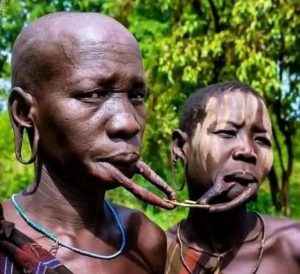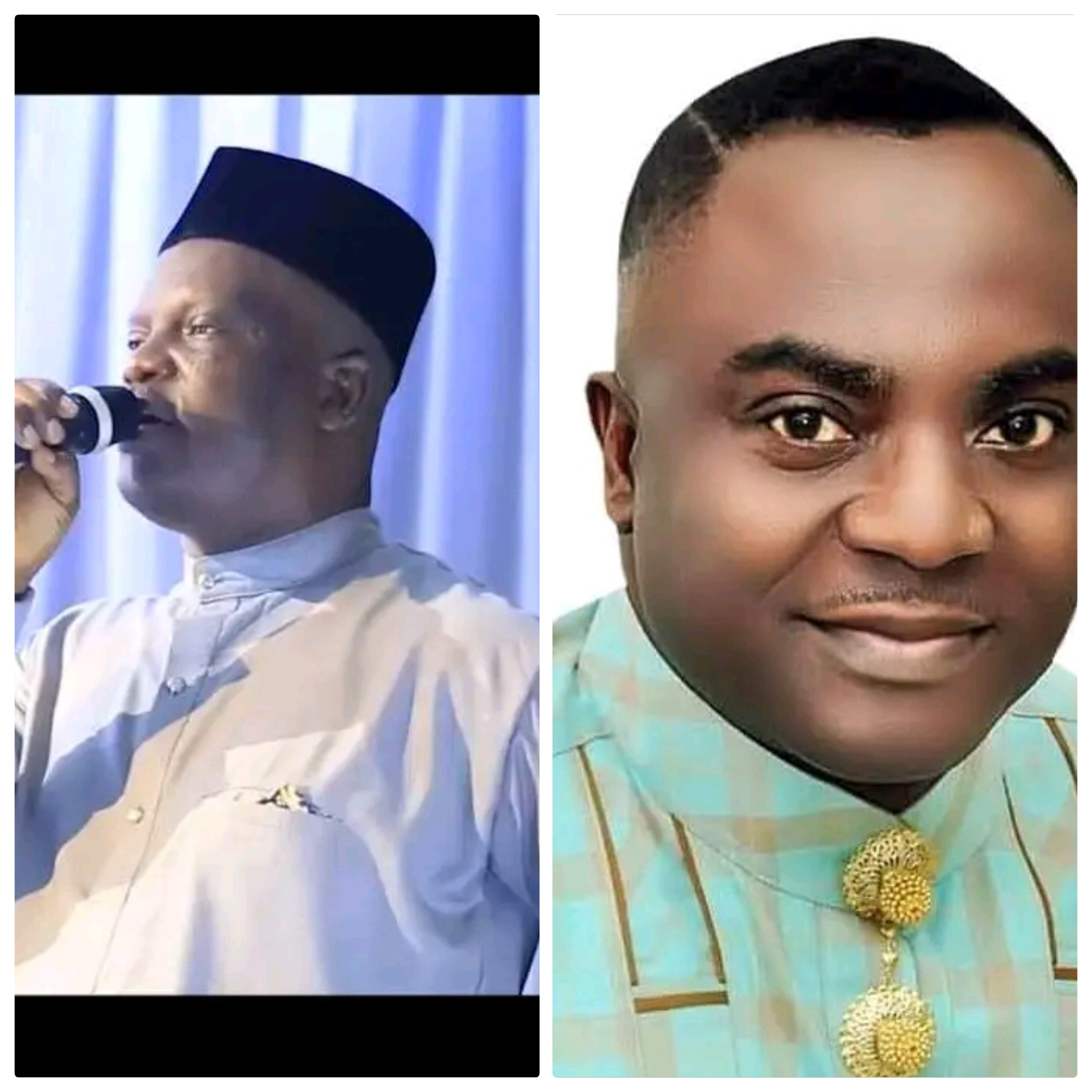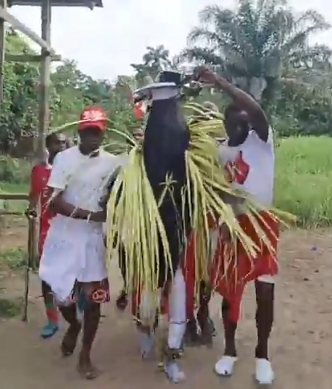Culture
CHILD CUSTODY: BBNAIJA PERE CHIDES DAVIDO’S SOPHIA MOMODU…

IduwiniVoice
CHILD CUSTODY: BBNAIJA PERE CHIDES DAVIDO’S SOPHIA MOMODU…
By Tobouke JEMINE
BBNaija’s Pere has scolded Davido’s baby mama ,Sophia Momodu for denying the Afroboat icon joint custody of their daughter, Imade.
According to him: “No child should be denied knowing and spending time with and being a part of their father’s life”
Slamming Sophia via his social media handle, the BBNAIJA star and actor wrote, “You ain’t cool with the dad; that’s not the child’s fault. Some women are just unbelievable.”
Culture
Exploring the Lip Plate Tradition of Ethiopia’s Mursi Tribe: A Symbol of Beauty, Fertility, and Devotion

By Staff Reporter
Deep within the Omo Valley of southern Ethiopia, the Mursi tribe upholds a centuries-old tradition that continues to intrigue the world—women wearing large clay or wooden lip plates. Far from being a mere cultural ornament, the lip plate holds deep significance within Mursi society, representing beauty, fertility, and loyalty.
Among the Mursi, the tradition of adorning the lower lip with a plate is more than just an aesthetic practice; it is deeply intertwined with a woman’s identity and status. As per Mursi beliefs, “The tradition of wearing lip plates is linked to a woman’s fertility and suitability for marriage.”
The lip plate, often inserted during adolescence, is gradually increased in size over time. It serves not only as a mark of womanhood but also as a highly respected symbol of elegance. “The lip plate in the Mursi tribe has many meanings—First, it is a symbol of great beauty,” a cultural observer noted.
However, the meaning of the lip plate extends beyond beauty. It also reflects the woman’s respect and commitment to her husband. “It symbolizes devotion to the husband because it should be worn with great pride when serving him food,” the tradition explains. In this context, wearing the plate becomes a visible expression of affection and duty within the household.
Interestingly, the plate’s presence—or absence—can also communicate mourning. Upon the death of her husband, a Mursi woman removes her lip plate. According to tribal belief, “A woman’s external beauty is said to disappear after her husband’s death,” signifying the end of a sacred bond and her withdrawal from the status the plate once represented.
These customs, rich with meaning, reflect the intricate and deeply spiritual worldview of the Mursi people. As globalization reaches even the most remote regions, the tribe’s practices continue to stand as a testament to the power of cultural identity and traditional values in shaping human expression.
—Ends—
Culture
BARRISTER SMOOTH LAUDS ASU EKIYE FOR PROMOTING IJAW LANGUAGE, SHARES HIS EXPERIENCE…

BARRISTER SMOOTH LAUDES ASU EKIYE FOR PROMOTING IJAW LANGUAGE, SHARES HIS EXPERIENCE…
By Tobouke JEMINE
The Ijaw Highlife music legend, and Paddle of Niger Delta, Chief Barrister S. Smooth has praised and prayed for the Ijaw Gospel musical icon, Asu Ekiye for promoting Ijaw language through music.
Through his Facebook handle, Barrister Smooth Official, the music hotshot shared his musical experience in South Africa and counselled Ijaw musicians, content creators and arts enthusiasts to project Ijaw cultural heritage in their creative enterprises and pursuits.
The music maven, Chief Smooth wrote:
“God bless you my brother ASU EKIYE, for the good work you have done in promoting IZON heritage globally. Years back, I travelled to South Africa to promote my new musical video on DSTV and I was surprised when they asked me if my language is Igbo. When I told them I am an Izon man and I speak Izon language and they were like “We have not heard of such tribe in Nigeria” but I am very happy and proud that through our little efforts and with the help of social media, Izon language has gone global and Izon or Ijaw people are now being recognized globally. I want to use this medium to advise our younger content creators, musicians and art enthusiasts to kindly step up the game with original content and always put Izon culture and tradition in everything we do”.
Culture
THE THEATRE AND DRAMA IN THE OLOROGUN MASQUERADE FESTIVAL OF THE AYAKOROMO PEOPLE OF DELTA STATE, NIGERIA.

THE THEATRE AND DRAMA IN THE OLOROGUN MASQUERADE FESTIVAL OF THE AYAKOROMO PEOPLE OF DELTA STATE, NIGERIA.
By Tobouke Jemine,
The African drama and theatre, particularly the Ayakoromo Olorogun Masquerade Festival is a vibrant display of various forms of entertainment and communication. This includes songs, music, dance, rituals, costumes, masks and make-up. The festival incorporates these elements to create a spectacle that captivates the audience and enhance the dramatic experience. The Olorogun masquerade festival which is a significant aspect of Ijaw traditional drama, and showcases a range of theatrical performances for the audience.
This theatrical nature is manifested through the integration of African theatre characteristics, allowing performers to utilize their creative imagination, physical abilities and resources of their bodies to communicate artistically. Through the multiple performances during the festival, it is evident that the Ayakoromo people have preserved their artistic heritage throughout the years.
A theatrical quality of the festival is the preparation involved. As in modern conception of theatre practice, the performers consciously prepare themselves to showcase their artistic ingenuity. There is a period of rehearsals, assembling or building of all necessary props, costumes and other paraphernalia.
As the cultural ambassadors, the Okosuotu masquerade group understands that there is a lot at stake, so they meticulously organize and ensure an exhilarating performance.
So the Olorogun masquerade performances are not accidental, they are carefully prepared with specific dates, time schedules and venues. This organization extends from the pre-performance stage to the post-performance stage. It involves sacrifices, practice sessions for songs, dance steps, musical instrumentations and movements.
Attention is also given to the care of costumes and the stage or performance area. For example, an orchestra is set up at the Ozubou playground, while the river bank of the same location is thoroughly cleaned to eliminate any hazards that could harm performers. This is where the Olorogun masquerade dramatically attempts to join the water Spirits by submerging himself in water, resembling a submarine
The dramatic rescue of the Olorogun masquerade during the “beni Akoro” or submerging act is purely a form of entertainment. It is important to note that no one would willingly sacrifice his life to impress the community as a masked performer. The Olorogun masquerade is merely acting out a script written by him and his group members. Every action and movement performed by the masquerade during the festival is solely for the purpose of entertainment. The audience is well aware of this fact and atténds the festival with the expectation of watching a highly entertaining performance.
Furthermore, at the Ozubou playground, the bank of the river and the Farcados River, different dramatic performances take place. The Ozubou playground serves as the location for masquerade dance performances and within it, there is a combined costume room and green room known as the “Owu Ware” , which acts as a place for rest after each performance.
The orchestra is also situated in the Ozubou playground, enclosed by bamboo poles or wood, and includes a platform where the drummers and “Awe” players gather. During the masquerade dance performances, members of the Okosuotu masquerade group form two lines in front of the orchestra, engaging in singing, dancing and acting as the chorus.
The members of the Okosuotu masquerade group also participate in the “Egbebelesie” dance performance at the Ozubou playground. This dance performance comes up during an interlude. During the short rest the drum master plays a rhythm which calls up each member to perform the traditional egbebelesie dance in front of the orchestra.
First, the master drummer calls the dancer’s title or his ancestor’s appellations to which the unmasked dancer nods, then followed by a distinct drum rhythm which constitutes the dance rhythm for the performers. It is a two by two dance, and the dancing style is more or less a leaping forward and backward kind of thing. As the dancer gets to the middle of the arena stage, he abandons his dancing position and take quick steps to the orchestra saying:
DANCER: -. Asagbeye
CHORUS-: eeh
DANCER-: eeh
CHORUS-;. ehh
DANCER-: kpi
CHORUS-: wou
DANCER-: Owu bo tuboke yegha ( Who owns the masquerade)
CHORUS-: owoyai yee ( we own the masquerades)
After this, the dancer runs back to continue with the Egbebelesie dance. As the dancer finishes his performance, he goes to join his counterparts at the orchestra saying “sein sein sein kegha” and the others respond “owugha” .
Ritual is the beginning of drama and theatre while festivals are events marking man’s accomplishments through his beliefs and distress by means of rituals. In rituals, we have spectacle, role playing, songs, chants, dance, mime and recitations. Ritual is at the root of the Olorogun masquerade festival. The ritualistic elements in festival are part of the celebration. The Ozubou kareowei ( Chief Priest of the Ozubou divinity), members of the Okosuotu masquerade group, the audience and the supposed wives of the Olorogun masquerade are responsible for the ritual performances and sacrificial rites. We have the Awalikpe ritual, the Kiri afen owu ritual, the agboro gbein Owu ritual, the akusuo mock ritual, etc. Certainly, the rituals we see in Olorogun festival are not drama or theatre per se, but there are theatrical elements inherent in the rituals. There are the elements of impersonation, role playing, the use of costumes and possession in the ritual performances.
Those who directly or indirectly take part in these ritual performances are seen as actors and actresses, assuming the roles of the relevant ancestors, divinities, or water Spirits through impersonation
Above all, these rituals symbolize the cleansing of the community’s sins and seeking trouble-free performances through the power of supernatural forces.
Music in the Olorogun festival is produced through the playing of the drums, the “Awe” and the rendition of songs. These are the means of communication and expression which creates the dramatic scenes and regulate the movements of the masquerades. The songs propel the dramatic action, highlight the dangerous nature of the masquerade, challenge Olorogun to demonstrate its powers as a spirit and urge the masquerade relentlessly on to continue with the performance.
